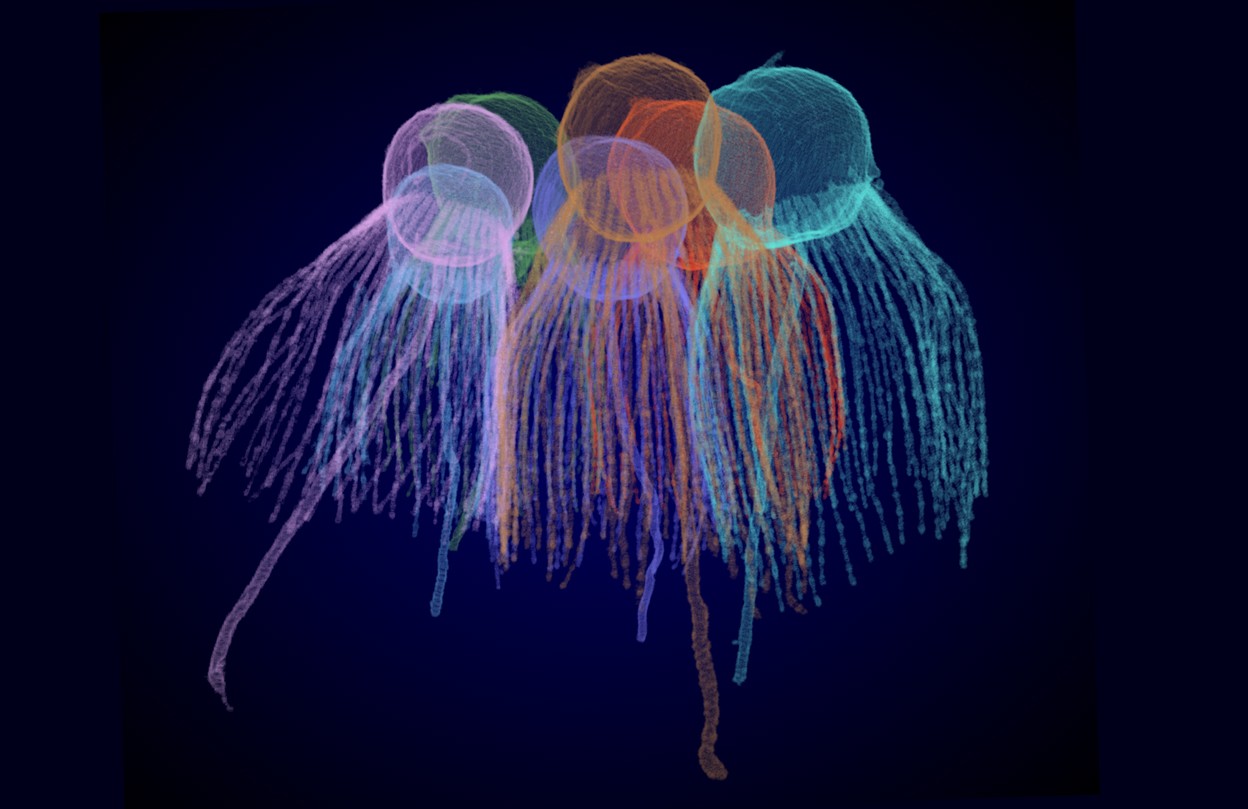Welcome to DU!
The truly grassroots left-of-center political community where regular people, not algorithms, drive the discussions and set the standards.
Join the community:
Create a free account
Support DU (and get rid of ads!):
Become a Star Member
Latest Breaking News
Editorials & Other Articles
General Discussion
The DU Lounge
All Forums
Issue Forums
Culture Forums
Alliance Forums
Region Forums
Support Forums
Help & Search
The DU Lounge
Related: Culture Forums, Support ForumsFor 3 billion years, life was unicellular. Why did it start to collaborate?

https://aeon.co/videos/for-3-billion-years-life-was-unicellular-why-did-it-start-to-collaborate
After the dawn of life some 4 billion years ago, one of the most fascinating and mysterious turning points in the history of life on Earth is its leap from single-celled organisms to multicellularity about 3 billion years later. Most scientists believe that this transition occurred only once in animals. So how and why, after so many aeons, did cells begin to cooperate and specialise to ultimately form animal life? This video from Nature uses microscopy to explore five unicellular microbes that display limited multicellular behaviours. Scientists hope that studying these species may help explain how life made the extraordinary leap towards complexity, giving rise to the rich diversity of animals on the planet today – including, of course, the complex creatures whose cells are collaborating to read these words.
Video by Nature
Producer: Shamini Bundell
Writer: Alla Katsnelson
1 October 2025
After the dawn of life some 4 billion years ago, one of the most fascinating and mysterious turning points in the history of life on Earth is its leap from single-celled organisms to multicellularity about 3 billion years later. Most scientists believe that this transition occurred only once in animals. So how and why, after so many aeons, did cells begin to cooperate and specialise to ultimately form animal life? This video from Nature uses microscopy to explore five unicellular microbes that display limited multicellular behaviours. Scientists hope that studying these species may help explain how life made the extraordinary leap towards complexity, giving rise to the rich diversity of animals on the planet today – including, of course, the complex creatures whose cells are collaborating to read these words.
Video by Nature
Producer: Shamini Bundell
Writer: Alla Katsnelson
1 October 2025

How did life get multicellular? Five simple organisms could have the answer
Single-celled species that often stick together in colonies have researchers rethinking the origin of animals.
https://www.nature.com/articles/d41586-025-02635-2

Choanoeca flexa cells form a sheet with all flagella and microvilli pointed in one direction. Credit: Diede de Haan
For some three billion years, unicellular organisms ruled Earth. Then, around one billion years ago, a new chapter of life began. Early attempts at team living began to stick, paving the way for the evolution of complex organisms, including animals, plants and fungi. Across all known life, the move to multicellularity happened at least 40 times, suggests one study. But, in animals, it seems to have occurred only once.
Beginning in the early 2000s, researchers interested in this remarkable event made a series of unexpected discoveries. The prevailing view held that a flood of genes had to evolve to enable the key properties of multicellularity: the ability of cells to stick together, communication using molecular signals and the coordinated regulation of gene expression that causes each cell to specialize and take its position in the organism. But studies found that some unicellular organisms express a slew of proteins that control key properties of multicellularity in animals. The molecular toolkit required for multicellularity seems to have existed well before the first animals came to be.
“This work has rewritten our understanding of animal origins,” says William Ratcliff, an evolutionary biologist at the Georgia Institute of Technology in Atlanta. “And it makes us ask different questions.” The two teams behind much of this research were led by evolutionary biologist and geneticist Nicole King at the University of California, Berkeley, and by evolutionary biologist Iñaki Ruiz-Trillo at the Institute of Evolutionary Biology in Barcelona, Spain. They have since expanded into a small community of scientists that has developed more than a dozen of these species into model organisms. All of these species are eukaryotes, which are distinct from prokaryotes in that they have a nucleus, and belong to lineages closely related to animals: choanoflagellates, filastereans, ichthyosporeans and corallochytreans (see ‘Animals’ unicellular relatives’). Many of the model species dabble in multicellularity by occasionally forming colonies.

Source: Ruiz-Trillo, I. et al. Annu. Rev. Microbiol. 77, 499–516 (2023).
Part of what makes these organisms so interesting is how different they are — in appearance, life stages and genetic make-up — researchers say. Each of the organisms, five of which are featured here, offers a peek into the evolutionary paths that could have led to animals. Looking across several lineages to piece together this event has become “the philosophy of this scientific community”, says molecular biologist Elena Casacuberta, who jointly runs the laboratory in Barcelona with Ruiz-Trillo. “Only with a comparative approach can we attempt to have a more accurate picture.”
The top model

When the single-celled choanoflagellate Salpingoeca rosetta divides in the presence of bacteria, its daughter cells form a rosette pattern. Credit: Mark Dayel
snip